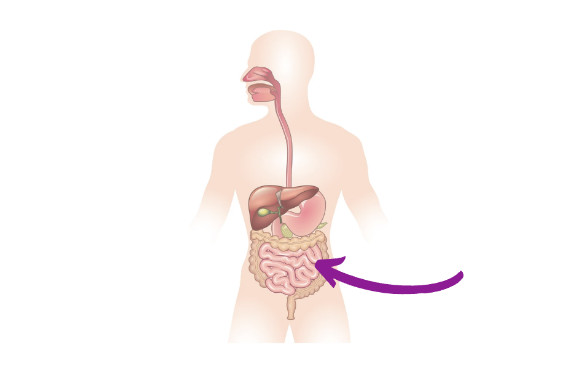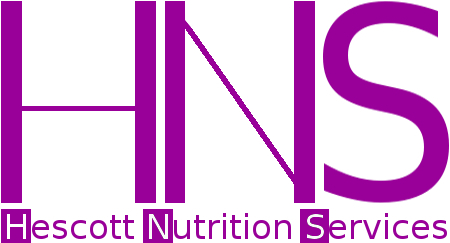.
Welcome to my blog!
.
SIBO Success: Mastering Nutrition for a Balanced Gut
By Hescott Nutrition Services | posted in Agust 2023 | Terminology, What is SIBO, Probiotics, Prebiotics, FODMAPS, What Causes SIBO, Common Symptoms, Testing, How is SIBO Diagnosed, hydrogen breath test, treatments, antibiotics, herbal therapy, diet, 5R protocol, What are FODMAPS
Reaching for optimal well-being requires understanding our body's internal systems. Among these, the gut plays a vital role in our overall health. The human digestive system is a marvel of complexity, with various regions contributing to the intricate process of breaking down food and absorbing nutrients. Within this intricate system lies the small intestine, acting as a crucial hub for nutrient absorption and digestion. However, when Small Intestinal Bacterial Overgrowth (SIBO) disrupts this delicate equilibrium, it's essential to arm ourselves with knowledge and strategies that pave the way for triumph over this challenge.
Terminology
What is SIBO?
Small Intestinal Bacterial Overgrowth (SIBO) is characterized by an elevation in bacterial quantity and changes in bacterial composition within the upper gastrointestinal tract, specifically the small intestine. In simpler terms, it denotes an abundance of bacteria in the small intestine. Although bacteria exist naturally throughout the digestive tract, a well-functioning gut typically maintains lower bacterial levels in the small intestine, with the highest concentrations found in the colon or large intestine.

As part of the digestive tract, the small intestine is the longest segment of the tract and houses is where food and digestive juices mix and nutrients are absorbed into the bloodstream.
Probiotics - Live microorganisms that confer a health benefit when they are present. For example, lactobacillus GG, lactobacillus bulgaricus, lactobacillus acidophilus, lactobacillus reuteri, lactobacillus plantarum, lactobacilluscasei, Bifidobacterium bifidus, S. salivarius, S. thermopiles, and Saccharomyces boulardii.
Prebiotics - Non-digestible parts of food that support beneficial microbes. In other words, they are necessary for the proliferation and activity of certain beneficial gut microbes. For example, inulin, fructo-oligosaccharides found in foods such as onions, garlic, artichokes, as well as, polyphenols.
FODMAPS - "Fermentable Oligo-, Di-, Monosaccharides, and Polyols"; Foods that may not be fully absorbed in the body and end up fermenting in the digestive tract.

What Causes SIBO?
Given the complexity of the intestinal microbiome, any disbalance may lead to severe health consequences including SIBO. Generally speaking, the etiology of SIBO can be very complex and is often associated with disorders of protective antibacterial mechanisms, anatomical abnormalities, and motility disorders.
There are several underlying conditions that are believed to contribute to SIBO which include:
- Achlorhydria/hypochlorhydria
- Aging
- Blind loop syndrome
- Metabolic disorders (e.g. diabetes)
- Pancreatitis
- Diabetes
- Pancreatic exocrine insufficiency
- Cystic fibrosis
- Immunodeficiency syndromes/Immune system disorders (e.g. HIV/AIDS)
- Small intestinal obstruction
- Diverticulosis
- Abdominal surgery
- Celiac disease
- Rosacea
- Viral gastroenteritis
- Crohn's disease
- Gastroparesis
- Nerve damage
- Cirrhosis
- Portal hypertension
- IBS
- Certain gastric bypass procedures
- Surgeries that cause strictures or adhesions kale
- Fistula
- Previous ileo-cecal resections
- Scleroderma
- Certain medications (e.g. immunosuppressants, PPIs, H2 blockers, narcotics)
- Injury
- Intestinal lymphoma
- Parkinson's disease
- Hypothyroidism
- Chronic condition that affects GI tract
- Post-radiation enteropathy
- Small intestinal pseudo-obstruction
Common Symptoms:
- Nausea
- Bloating/distensionv
- Vomiting
- Diarrhea
- Malnutrition
- Weight loss
- Joint pain
- Body aches/fatigue
- Rash
- Pain
- Acne
- Eczema
- Asthma
- Depression
- Rosacea
- Fat malabsorption
- Nutrient deficiencies
- Arthritis
- Deficiency syndromes
- Vitamin B12 deficiency symptoms
- Numbness or tingling in extremities
- Anemia
- Jaundice
- Cognitive function decline
- Memory loss
- Neurologic abnormalities
- Confusion
- Slurred speech
- Altered mental status (may complain of or appear to be drunk in the absence of ethanol intake

Left untreated, SIBO can cause serious health complications including malnutrition. Malnutrition is the poor absorption of essential nutrients and macronutrients causing deficiencies related to iron, vitamin B12, fat-soluble vitamins (A, D, E, and K), and calcium.
Vitamin B12 deficiency is of particular concern, especially in vegetarians and vegans and those who have inadequate stomach acid or take medications that suppress stomach acid. For example, PPIs, H2 blockers, and other antacids. In vitamin B12 deficiency, it is crucial that megaloblastic anemia is caught early as prolonged deficiency can lead to permanent nerve damage.

Testing
How is SIBO Diagnosed?
1. History - a complete medical history is taken
- review medical history
- review history of medications
- assess risk factors
- record symptoms
- explore diet
2. Testing - breath tests Hydrogen and methane breath tests use a solution containing lactulose, glucose, or xylose. They measure the amount of gas produced by the bacteria in the small intestine and hydrogen and methane in the body. The way this works is that the only way the body produces these types of gasses is through the output of bacteria.
Hydrogen and methane are exclusively produced by intestinal bacteria in the large intestine in healthy individuals. In the presence of SIBO, hydrogen and methane are produced by intestinal bacteria in both the large and small intestine.
The hydrogen breath test is considered to be more accurate for the diagnosis of SIBO compared to the methane breath test. However, possible false results and difficulty in their interpretation may exist. Additionally, people with lactose intolerance who do not produce hydrogen would form methane after lactulose administration instead of hydrogen.

A hydrogen breath test entails:
- A low-fiber, low-fermentable diet for 24-48 hours and an overnight fast prior to the test
- After the fast, a baseline determination is made of how much gas the person is producing.
- A predetermined load of simple carbohydrates, such as dextrose or lactulose, is consumed.
- Samples are collected every 15-20 minutes for a total of 3-5 hours.
- As a result, the test measures how much hydrogen and methane has been produced by the bacteria.
Elevated levels of hydrogen in the breath indicate improper digestion. Additionally, the test measures methane production. Elevated levels indicate overgrowth of methane-producing bacteria that consume hydrogen and produce methane as a by-product.

Treatments:
1. Antibiotics - Removing Bacteria
SIBO is often initially treated with antibiotics. For example, rifaximin, metronidazole, neomycin,
tetracycline, or a combination. Antibiotic treatment helps to remove poor bacteria from the gut
but also removes beneficial bacteria necessary for digestive function. In the presence of SIBO
caused by blind loop syndrome, long-term antibiotics may be required. However, even with
antibiotic treatment, SIBO has been found to have a high recurrence (~45%) rate as antibiotics
are not the only form of intervention needed when treating SIBO.
2. Herbal Therapy - Alternative Treatment
Alternatives have proven to be as effective as three courses of antibiotic therapy and include the
use of herbal therapy. In particular, oregano oil, berberine extract, wormwood oil, lemon balm,
and Indian barberry root extract. However, details surrounding dosing are not clear at this time.
3. Diet - Management with Nutrition
Diet plays a significant role in the management of symptoms. Following the 5R protocol with an
experienced healthcare professional may be part of an effective treatment plan. Also, by
reducing the load of fermentable carbohydrates (FODMAPs) through an elimination diet,
symptom relief and healing may occur.
5R Protocol:
Remove - stressors & irritants
- Microbes via antibiotic treatment, such as, Rifaximin, Metronidazole, Neomycin, or Tetracycline
- Snacking between meals
- Fermentable carbohydrates, such as, FODMAPs
- Artificial sweeteners, such as, Splenda
Replace - digestion facilitators
- Replace hydrochloric acid if it is low. Replacing hydrocholoric acid can help to balance pH and prevent overgrowth of bacteria in the upper GI tract.
- Consider use of digestive bitters such as Sweetish bitters
- Betaine HCL
- Address nutrient deficiencies
- If malabsorption (steatorrhea) is present, MCT oil may help to prevent weight loss and support energy production
- Note: MCT oil does not require bile acids for digestion and absorption
Repopulate - Probiotics and Prebiotics
- Probiotic use in SIBO treatment is controversial because lactobacilli have been cultured in duodenal aspirates and adding to the bacterial load may exacerbate symptoms
- Slow and gradual introduction of prebiotic-free probiotic may be beneficial
Repair - Intestinal Wall
- Supplementation
- Vitamin A
- Omega - 3 fatty acids such as cold water fish or flax seeds
- Zinc
- Bone broth
Rebalance - Stress management and Lifestyle
- Eat at regular intervals every 3-5 hours
- Gradually re-introduce foods and assess tolerance
- Acupuncture 2-3 times per week to support and stimulate peristalsis
- Yoga or deep breathing or meditation may stimulate the vagus nerve and promote healthy parasympathetic nervous signaling

What are FODMAPS?
Also known as Fermentable Oligosaccharides, Disaccharides, Monosaccharides, and Polyols - are carbohydrates found in foods that are poorly absorbed in the small intestine. Since these carbohydrates are poorly absorbed, they arrive to the colon still intact and are fermented by bacteria, resulting in gas. FODMAPs also have an osmotic effect, which means they draw water into the digestive tract. These actions in the gut may cause symptoms of diarrhea, constipation, gas, bloating and cramping for some individuals.
The most up-to-date, comprehensive list of high FODMAP foods can be found on the Monash University FODMAP Diet app. Some foods can be high or low FODMAP depending on certain characteristics, such as processing or the amount or part of a food.
- Scallion bulbs, which is the white part, are high FODMAP, but the green stalks are low FODMAP.
- 1 cup of chickpeas is high FODMAP, but ¼ cup is low FODMAP.
- Dry lentils are high FODMAP, but canned lentils are low FODMAP.
- Garlic is high FODMAP, but garlic-infused olive oil is low FODMAP. This is because the high FODMAP carbohydrates in garlic are water-soluble, so they do not leach out into the oil.

Conclusion
The delicate equilibrium within the gut can be disrupted by the presence of Small Intestinal Bacterial Overgrowth (SIBO), leading to a cascade of health challenges. By examining the complexities of SIBO, from its origins and symptomatic manifestations to diagnostic methodologies and treatment strategies, you can make more wise decisions for your well-being. Nevertheless, it is important to acknowledge that this information is of a general nature, and individual bodies exhibit considerable diversity. Therefore, seeking counsel from a registered dietitian becomes invaluable, offering personalized assistance and expert direction to navigate with precision.
Need some support in planning and making meals to get the most nutrition for you and your
family?
Go to to book an appointment,
or call 347-915-3738.
